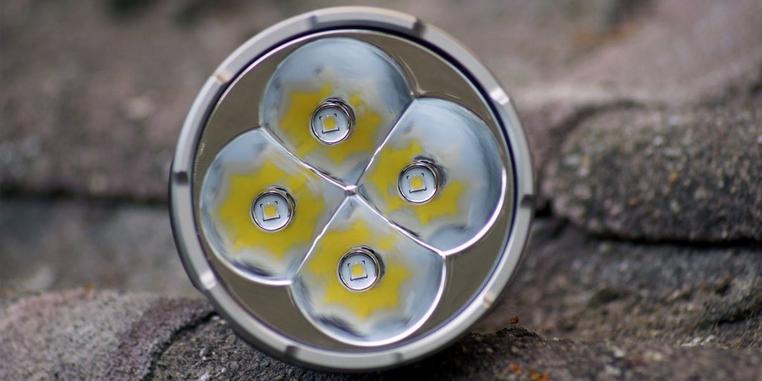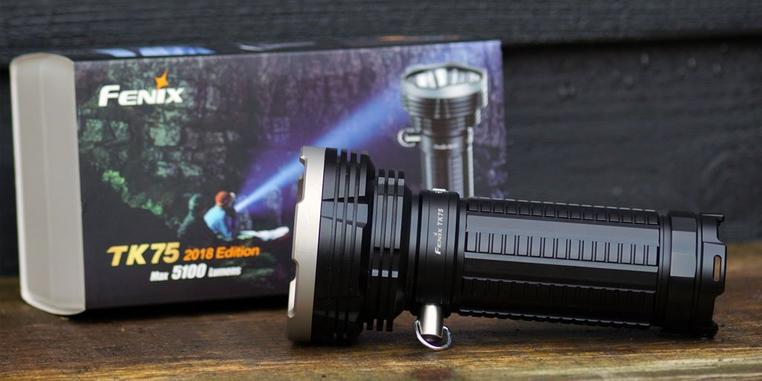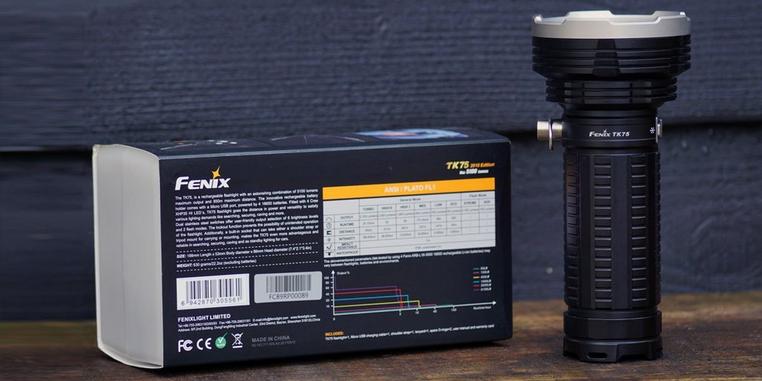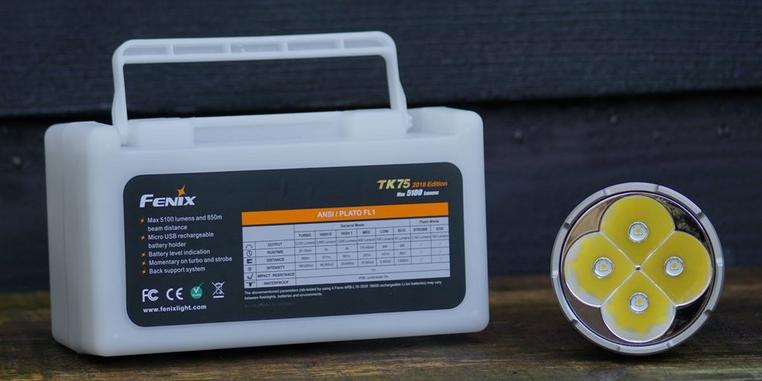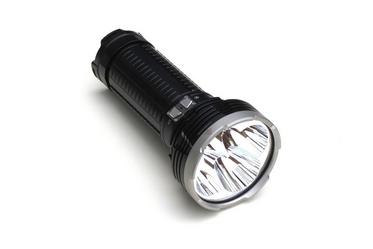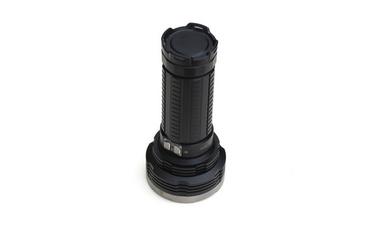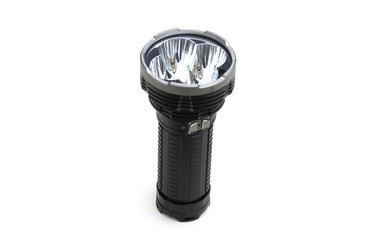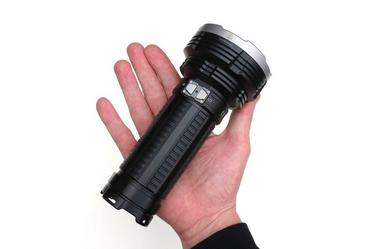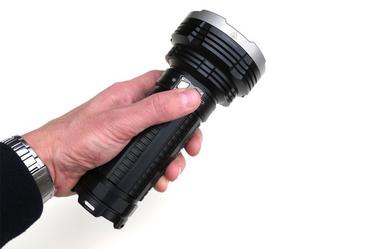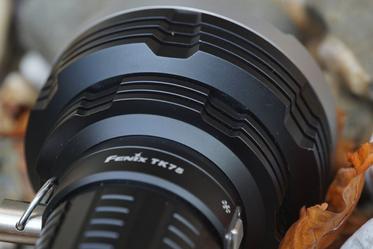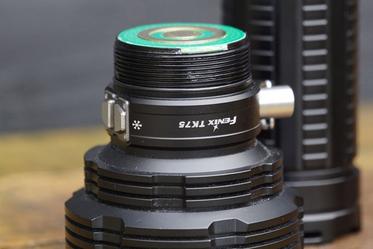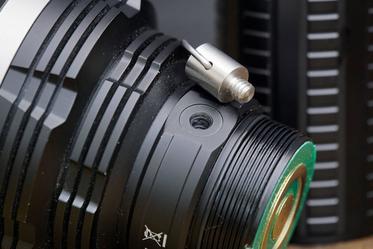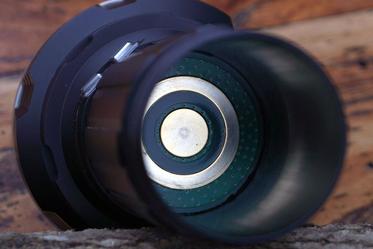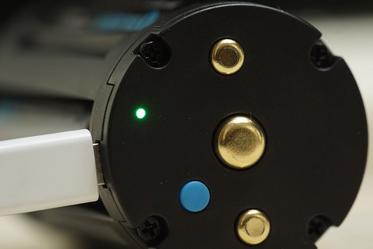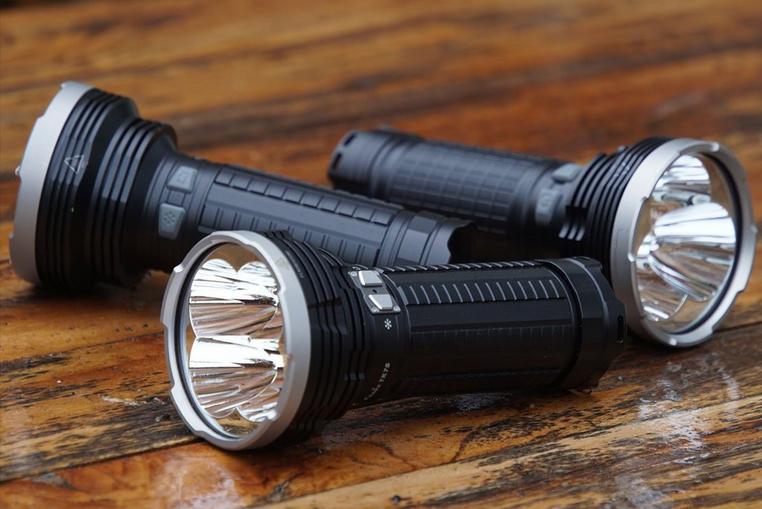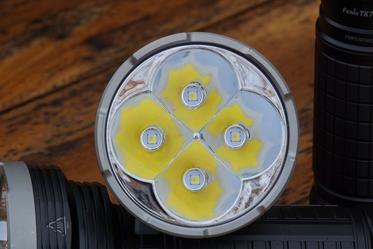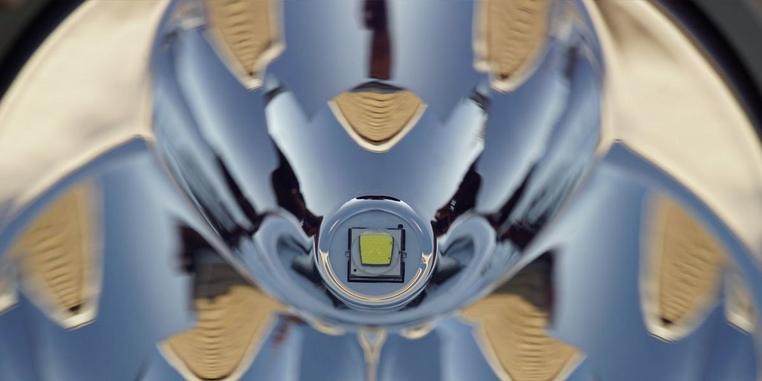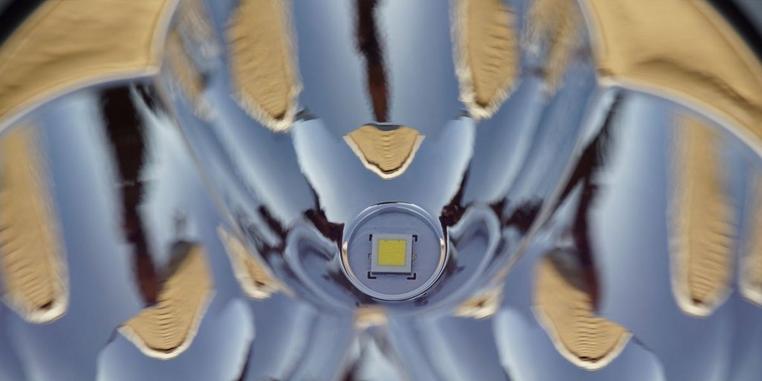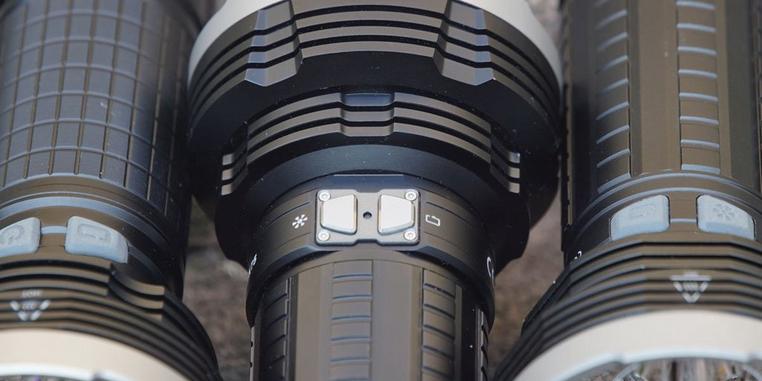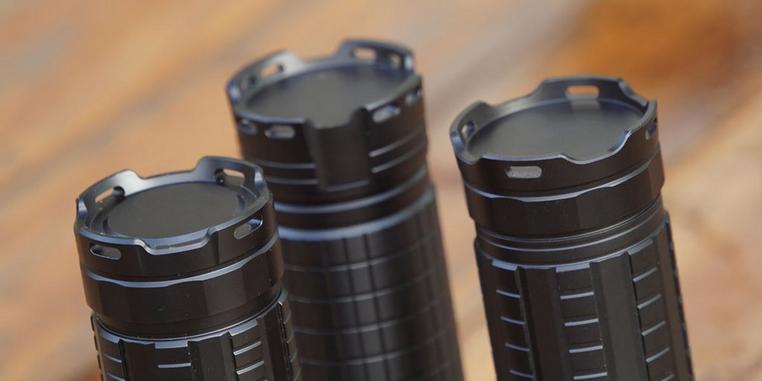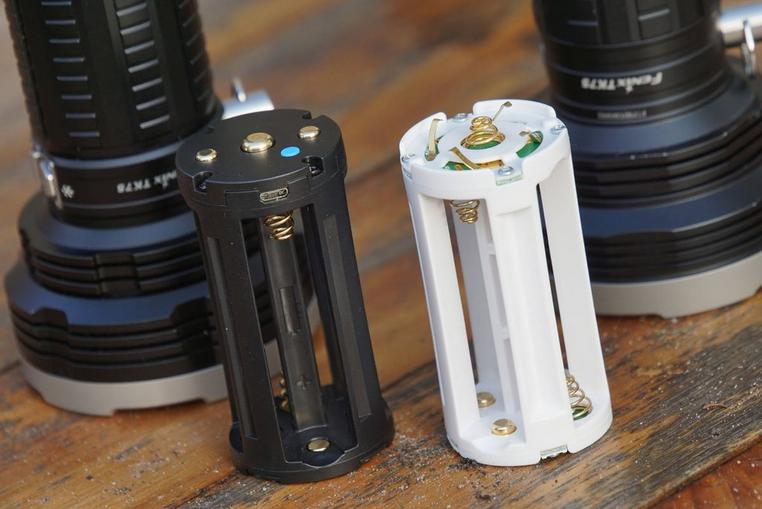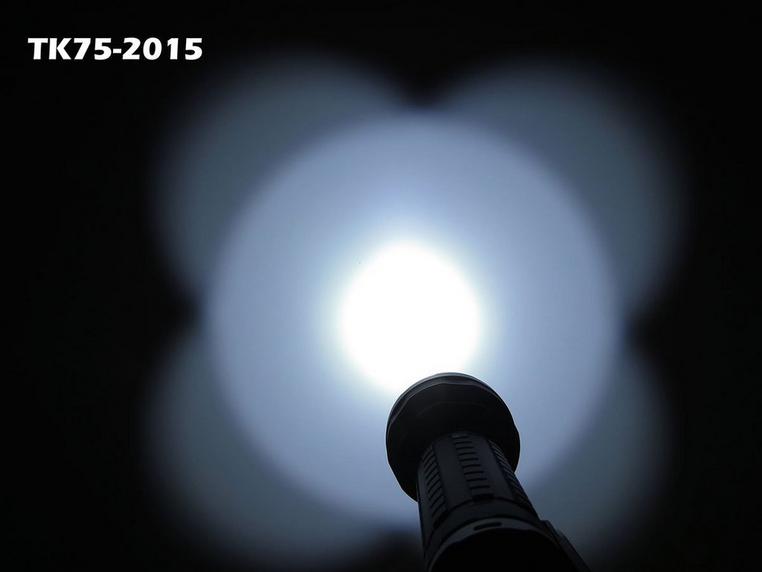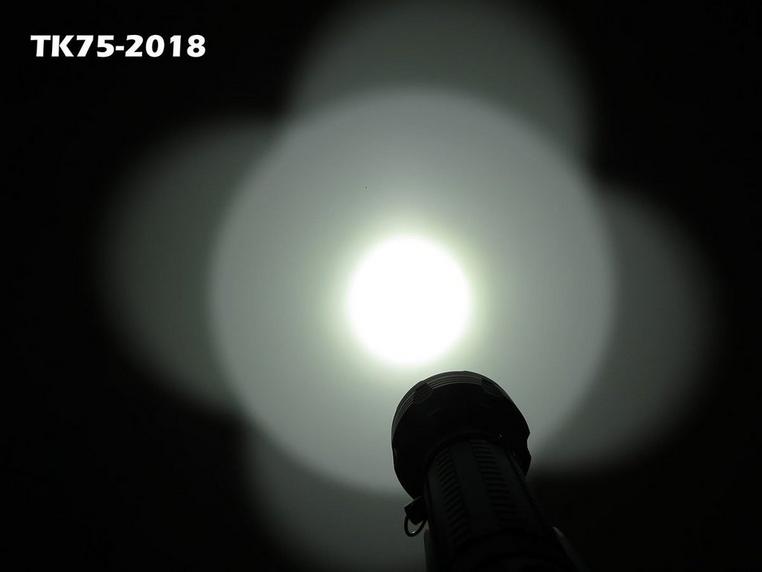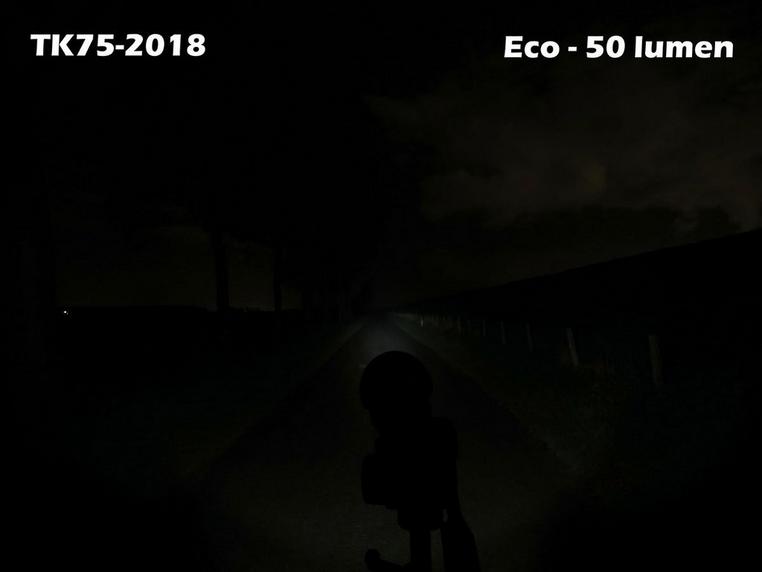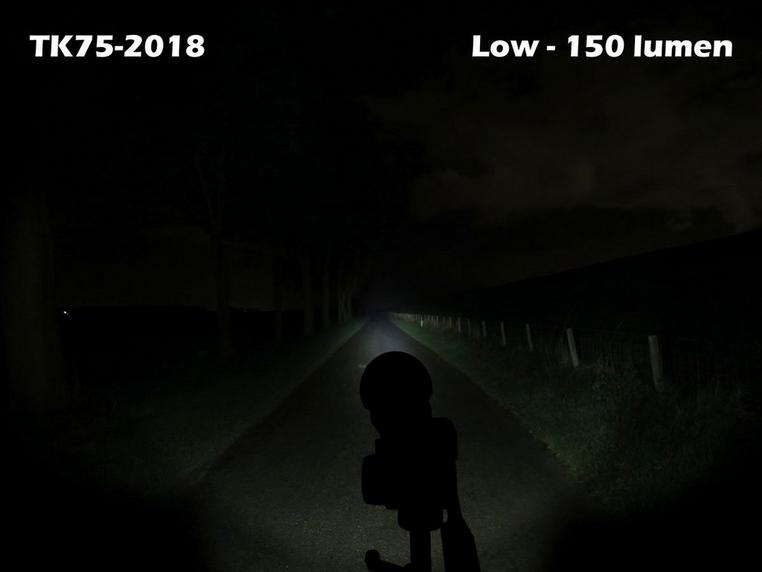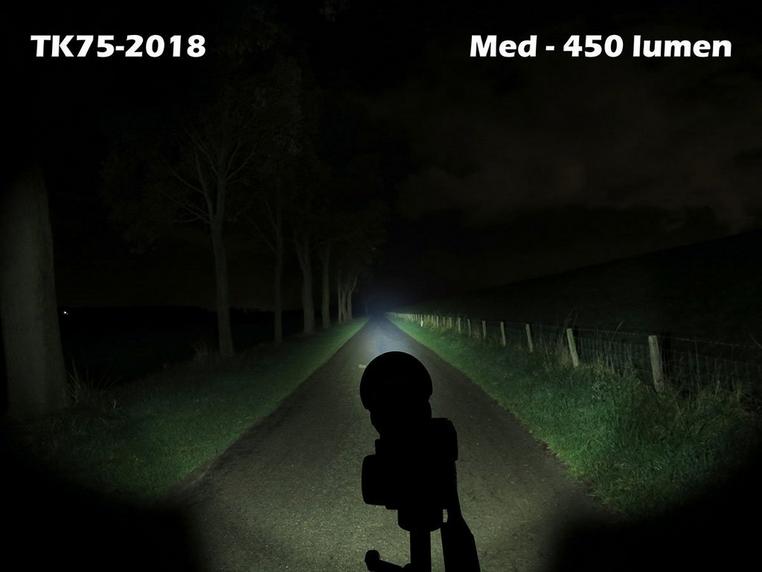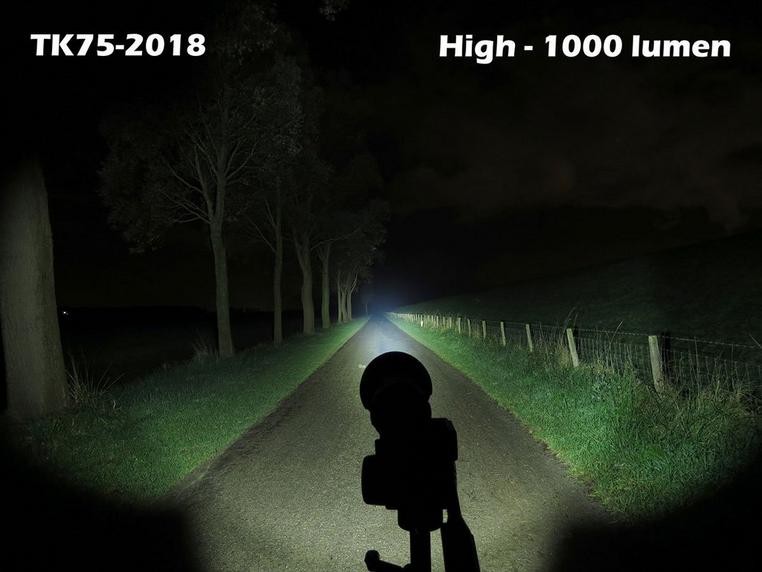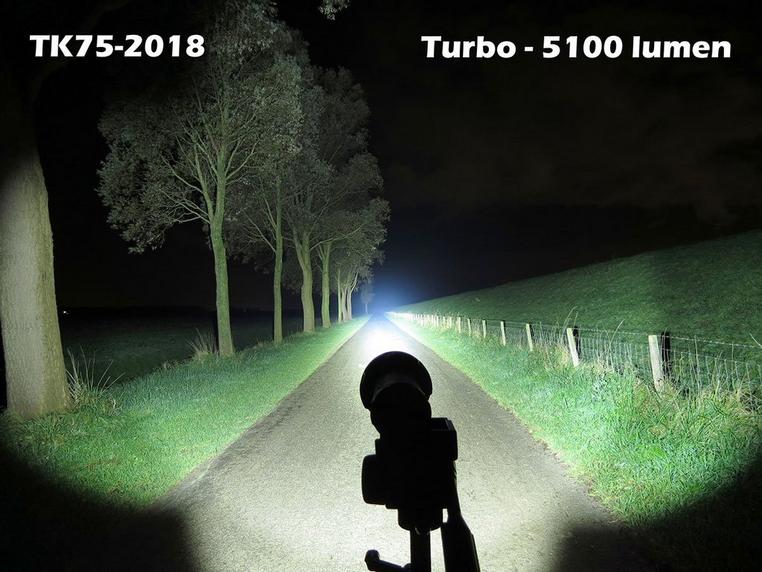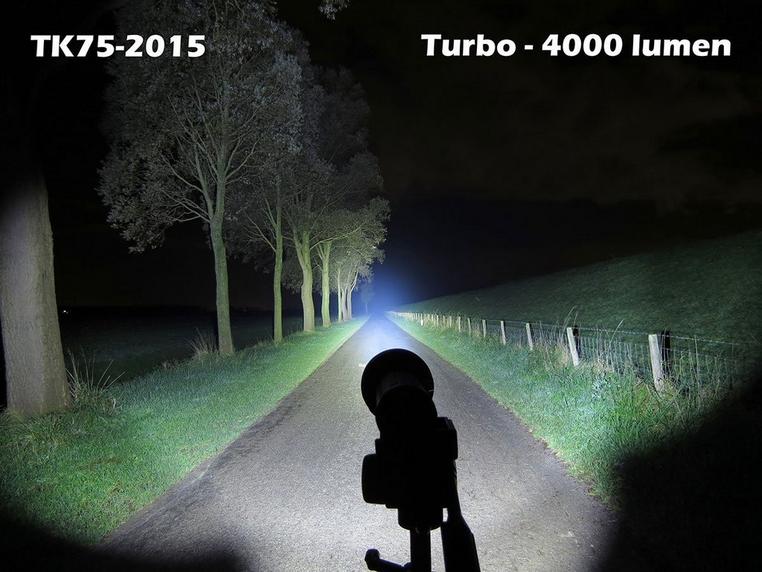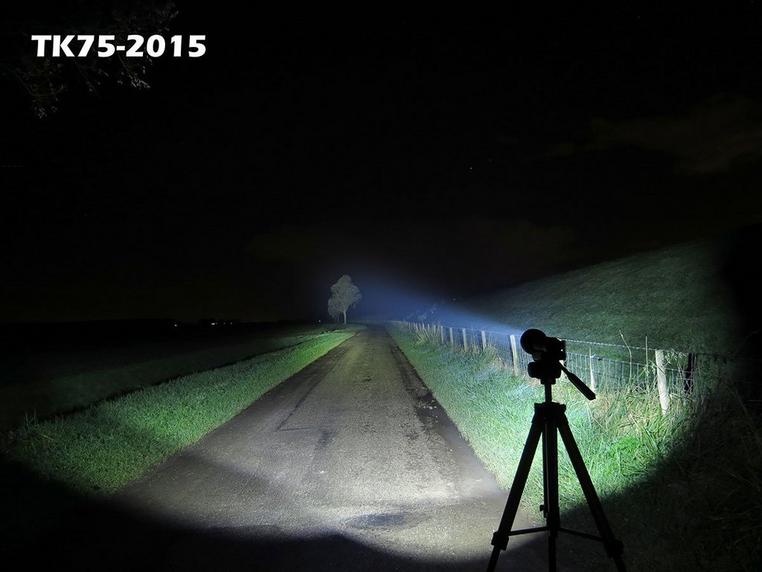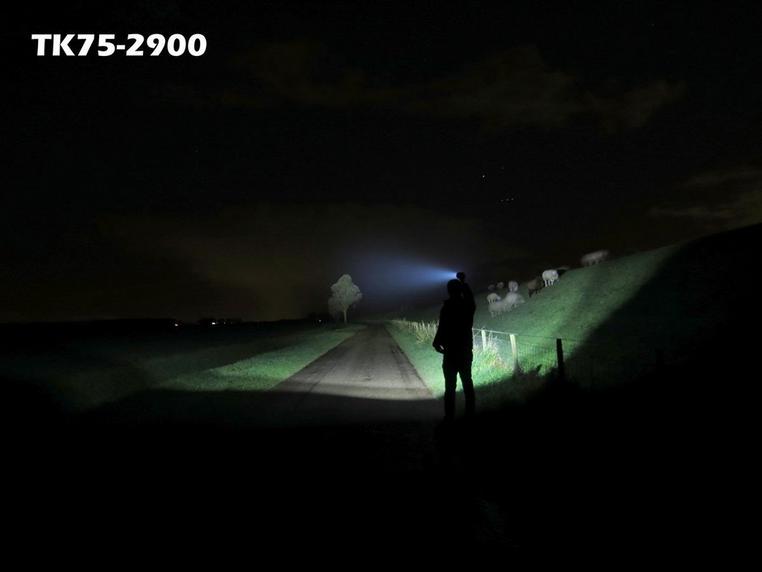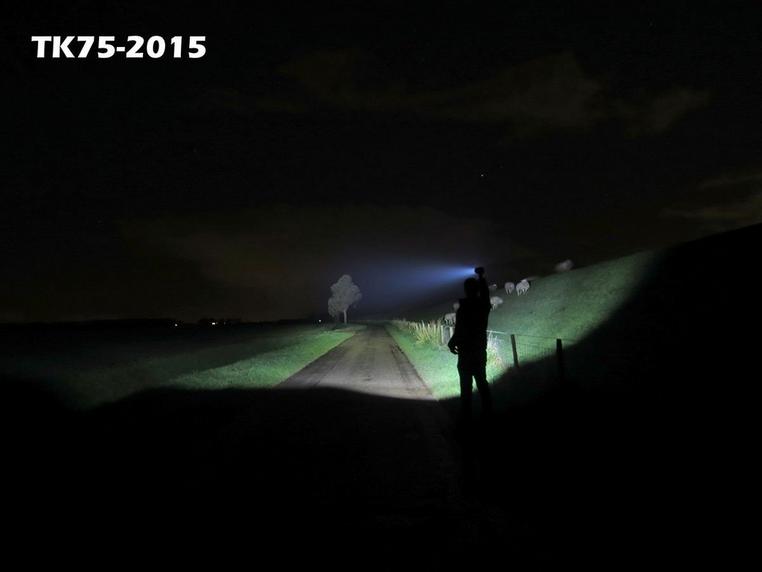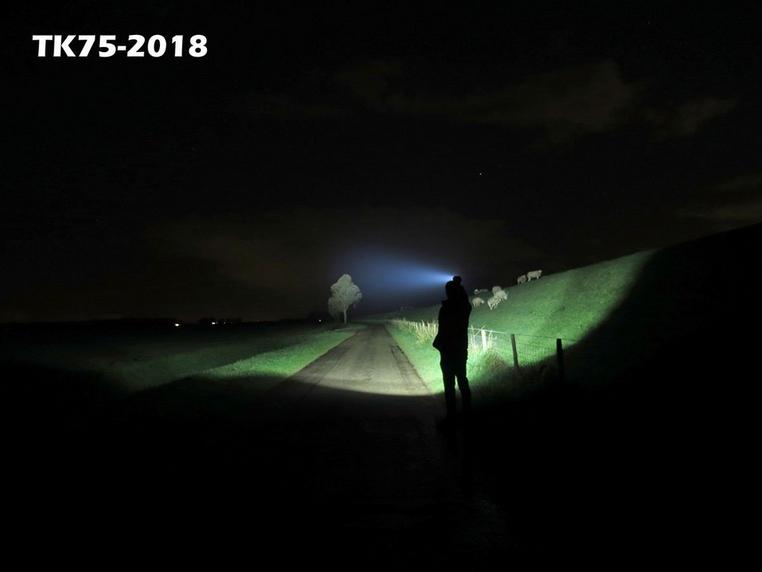Fenix TK75-2018 Expert Review
Despite its respectable age the Fenix TK75 is still a very good flashlight. Thanks to its proven reliability, its compact size and impressive output this light is still very popular. Because you cannot stop progress the manufacturer regularly updates the light. The last update, which I described in the review of the TK75 2015-edition was introduced a couple of years ago. High time for the TK75 to be rejuvenated!
The 2018-version still has the same measurements and shapes, but has thoroughly been modified in many other aspects. I will mention the most important: the light output has increased tremendously, but also the beam distance has improved. New is also the charging function added to the battery holder: leave your individual charger at home! But there is more… something I will tell you more about later. In this review I will take a close look at the TK75-2018; often in combination with two previous models to see if the updates are actually improvements. I will also show you, by means of photographs, what you can expect from these flashlights in the dark!
Fenix TK75-2018 Unboxing
When compared to previous editions the box has barely changed. After all, why change a winning team? The plastic case is great when you want to store the TK75 or take it with you. In terms of looks we spot a new sticker on the box and a new cardboard wrap around it. Looks clean and appealing! A striking difference in terms of contents is the included USB cable; obvious because this is the first rechargeable TK75. So only a cable. Apparently Fenix assumed you would have a charger plug with USB port lying around. I don’t think that will be an issue for anyone, or will it… In short, the box: so far so good; except for one thing: I still miss a holster; it appears that Fenix believes the lanyard and included shoulder strap are enough. Don’t forget to order the batteries (please note, button-tops!) if you want to get started right away!
The newest edition of the Fenix TK75 is very similar to its predecessors, so when you look at the different versions from a distance you will barely notice the differences. However, each version has its own characteristics which will only really be noticeable when held next to each other. The most in-your-face difference is the ‘control panel’ with metal buttons that has been ‘screwed’ onto the light. In between the buttons you will find a small LED light: that is the power indicator. The profile of the body is a little more intricate to guarantee a better grip. However, I personally don’t really notice the difference when compared to the 2015-edition. The cut-outs in the head of the light and the changed shape of the end cap ensure that the light won’t roll away when you put it down. A great improvement in comparison to the previous models.
One quick side-note: In terms of construction quality, finish and used materials the TK75-2018 is a proper Fenix flashlight and, therefore, excellent when judged on these aspects.
The inside of the head has (as far as I could tell) the same reflector as the TK75-2015. The difference here can be found in the LED lights: the 2018 version works with four XHP35 HI LED lights. These LED lights have a higher light output than the XM-L2 U2’s used in the 2015 edition and have a pretty substantial beam distance. These days we often find these LED lights in the so-called ‘throwers’. So yes, this was a very logical update from Fenix; more lumens and a larger beam distance for the TK75 with these XHP35 HI LED lights.
When you open up the lights you will find another substantial difference: the battery holder. On an optical level you will only really notice the difference on top: with the newest edition (which is, by the way, black) the contact points appear to be a lot more stable, even though I cannot remember having any problems with the previous editions. Here you will also find a control light for the battery status which you can check by pressing the small blue button. But that is not the most important feature! The most important feature can be found on the side because that is where the micro-USB port is located you can use to charge the batteries, making an individual charger redundant! While charging the button will be red and flickering. When the batteries are full the light will be green. Obvious and simple! Fully charging four 3500 mAh batteries takes approximately four hours with a 1A charger. So, not bad at all! Please note: while the previous editions could handle both flat-tops and button-top batteries, the TK75-2018 can only handle button-top 18650 batteries.
A great benefit of charging your batteries on the inside of the flashlight is that you can guarantee the waterproof aspect. As you might know this is not always the case when you have a charging socket located on the outside of the light. After all, if that socket isn’t completely covered water might still be able to get inside. The downside, however, is that you will always have to open up the light to charge it, meaning that your O-rings will wear out faster. For this reason I definitely recommend you grease the screw threads. We can close off the first chapter with the following conclusion: Fenix has been able, once again, to improve a product that was, in fact, already great to begin with. The loading function is great and is fast enough; you can even charge the rest of your 18650 batteries. It hardly doesn’t get any better than that! However, because pictures often say more than a thousand words below a couple of them to give you a better impression of the TK75!
How to use the Fenix TK75
When compared to the TK75-2015 the user interface hasn’t changed that much, mostly because the set-up was already really logical. Fortunately the SOS-mode has returned, a mode I definitely missed in the 2015 version. The most important difference can be found in the buttons: the metal switches on the TK75-2018 are slightly smaller, have a little less grip than the rubber buttons on the previous editions and they are, clearly, positioned closely together. The benefit is the sustainability; these buttons are nearly indestructible. The downside, I believe, is the size and the grip: the risk of accidentally taking hold of the wrong switch is a lot higher than with the previous editions. Also good to know, the tactile feedback is great!
You switch on the regular light modes by pressing down the right button for about a second, after which you can easily switch between the six modes with short clicks. So yes, the 2018 edition has been enhanced with an additional light mode, which is actually a great addition! Also new is that you can always turn on the turbo mode using the same button, by pressing it down for about 2 seconds. This works when the light is on, but also when it is off enabling you to always immediately reach the Turbo mode. Somewhat strange here is the fact that the light, shortly before it switches to Turbo, starts with the previously used light mode (when turned off) or shortly switched off (when turned on). That is the ‘downside’ of that many functions underneath one button. However, if you ask me this doesn’t outweigh the advantages you will also have!
You turn the light off by slightly pressing down the switch a little longer than a second. The division of the modes is, I believe, great: first two lower light modes followed by two in the middle segment and a proper high mode you can leave on for a very long time. With the Turbo mode you clearly take it up a notch, but this mode is not meant to be used for a long time, approximately two to four minutes. In this mode the light will definitely start to heat up and will, thanks to the built-in security, quickly switch back to a lower mode. After a (short) cooling-off period the light will let you return to the Turbo mode.
The left button can be used for the flash modes. Shortly pressing down turns on the blinding stroboscope mode (watch out for your eyes!). To make it your assailant even more difficult this mode has two frequencies which, according to Fenix, work even more disorienting. A short click in this mode and you will turn the SOS function on, which, unlike the stroboscope won’t use the maximum amount of 5100 lumens. They definitely thought about this because this mode should never, in case of an emergency, ask too much of the battery. After all, you might need to use the emergency signal for quite a long time. You do, however, need to pass the blinding stroboscope mode to reach this mode.. You could also use the left button (when the light is on standby) for a power check; its function is similar to the blue button on the rechargeable battery compartment. When the light needs to be recharged the indicator in between the switches will light up in red. All in all a great user interface for the TK75-2018 with a couple of tiny quirks. Technically speaking it all works well, as is fitting for a genuine Fenix flashlight!
Fenix TK75-2015 vs Fenix TK75-2018
As I said before the TK75 has been going strong for years in this form. Each time, however, Fenix has been able to update and improve an already amazing flashlight. Why not compare the three latest models to see what changed over the course of the years!
Output of the Fenix TK75
Enough said and written; why don’t we try them out to see what they can do: how much light do they produce? We start inside by pointing the flashlight at a white wall as it will definitely show you the light profile and the difference between the three lights in terms of colour.
Because the reflector is comprised of small reflectors you will basically see three light beams that overlap. This explains the ‘flower’ you see when you point the light at the ceiling or the wall and are standing only a few feet away. This is normal and barely visible when you go outside.
Surprising is the difference in colour between the previous editions and the TK75-2018 which clearly has a more neutral and pleasant colour. The colour on the 2018 edition looks a bit more like sunlight, which makes everything you aim at look a bit more natural. In addition, a more neutral colour doesn’t reflect as much, which means that, when dealing with a lot of humidity, you won’t blind yourself as easily.
Below the profiles. Striking is that the 2900 lumens edition has a smaller hotspot than the 2015 edition. This because the three reflectors are positioned a little deeper than the four reflectors in the TK75-2015. The flattened LED lights in the TK75-2018 also take care of a larger beam distance which means that this version has the smallest and brightest hotspot. In terms of construction the profiles are not that different; I also wasn’t able to find any defects or imperfections. You can clearly see that all the versions of the TK75 have been enhanced with a large and bright hotspot, with, therefore, an even spill. As a result these lights will combine a massive beam distance with a lot of light at a shorter distance, which makes these lights perfect as search lights! By shining the light on a white wall you can also clearly see that the profiles do not have any spots or imperfections. I can definitely reassure you: Fenix has definitely done a fine job here!
Considering the fact that these lights are not meant to be used inside the house we will take them where they feel most at home: outside! The first location is a road with a row of trees on the left and a dike overgrown with grass on the right. As such we will get a great overview of the colour and the reach. Striking about the TK75-2018 are the two lowest modes. With these modes you will, in any case, have enough light and the batteries will definitely also last a long time. Also striking is the enormous leap from the second highest to the Turbo mode: the light impresses every single time! Below the TK75-2018 in action, from the lowest to the highest mode.
Once again the same location. Now we start off with the ‘weakest’ link, the 2900 lumens edition. This light definitely still holds its own as you can see in the photograph!
The 2015 edition with 4000 lumens is optically speaking not a big improvement when compared to the ‘second version’. Nearby the light will definitely light up the surroundings more, but it also has less deep reflectors than the version with 2900 lumens. As such its beam distance is not a whole lot further than the first light I mentioned.
Again the photograph of the TK75-2018. You can clearly see here that this light definitely has a larger beam distance because the hotspot is a lot brighter. It is amazing to see that this is barely at the expense of what it can do when held up close, enabling you to light up an enormous piece of land.
Next location: Why not try out a test that focuses on the distance? Here we also start with the oldest version. The tree is located approximately 250 meters away. All lights are set in the Turbo mode.
All editions can easily cross this distance (obviously). At this location you can clearly also see the profile of the lights. The four LED lights/ reflectors of the latest editions take care of a wider profile, enabling you to light up a larger piece of land located further away.
At this location you can clearly see that the 2015 edition has more lumens; a wider piece of land is more clearly highlighted. The colour of the light doesn’t differ from the 2900 lumens version, the beam distance, however, is better: you can clearly see the tree.
At this location you can clearly see how impressive the TK75-2018 edition is when compared to its older brothers: a (much) better beam distance, more beautiful light and a more even profile. Every single time I use this light its feels great to switch to the highest mode!
Below a couple more photographs of me holding the light; this will give you a good idea of the proportions of the user and the profile of the light. As a side note, the sheep on the dike didn’t really care about these heavy-weights; even though they quite often moved back and forth during the recordings…
Conclusion
The new Fenix TK75 2018-edition is, in more ways than one, a beautiful step in the right direction. Especially in terms of the strength of the light: this version made me feel the same way as when the first edition came out: you need to have seen it at least once! Charging the batteries in the light will make the life of many users a whole lot easier: you won’t immediately have to go out looking for an appropriate charger. The design has also gotten a small update; especially the fact that it is better equipped against rolling away is a definite improvement. The steel switches will live longer than their rubber counterparts, but I do feel that they should have been a bit larger. What if you accidentally hit the wrong button and turn on the blinding stroboscope mode…? The indicator in between the buttons is great and clearly a step in the right direction when compared to the previously used indications. That enormous force of light coming from such a compact light has a down side: when you use the Turbo mode you will, in most cases, only be able to use it for less than five minutes after which the light needs a cooling-off period. Fortunately you will, aside from the Turbo mode, have five other modes that will enable you to use the light for a long time; these amounts of lumens will, in most cases, be enough during, for instance, search operations, adventures, walking the dog or spending some time on the campsite or boat.
The TK75 had always been a great flashlight, this updated version, however, definitely takes it up a notch! Highly recommended!
Koen van der Jagt
Ever since he could walk Koen has been interested in lights, wires and batteries. As a child he was always working with dyno torches, bike lights and electrical boxes. The krypton and halogen lights were replaced by LED lights. A couple of years ago he discovered the ‘professional’ stuff. His first brands were Led Lenser and Fenix. Photography is also one of his hobbies. In addition to nature and meteorology Koen loves to show others what a light can do and what its beam looks like at night. Koen’s reviews can often be found on forums such as candlepowerforums.com and taschenlampen-forum.de. Throughout the years Koen has collected lights in practically any category: from small and compact to enormous powerhouses.


